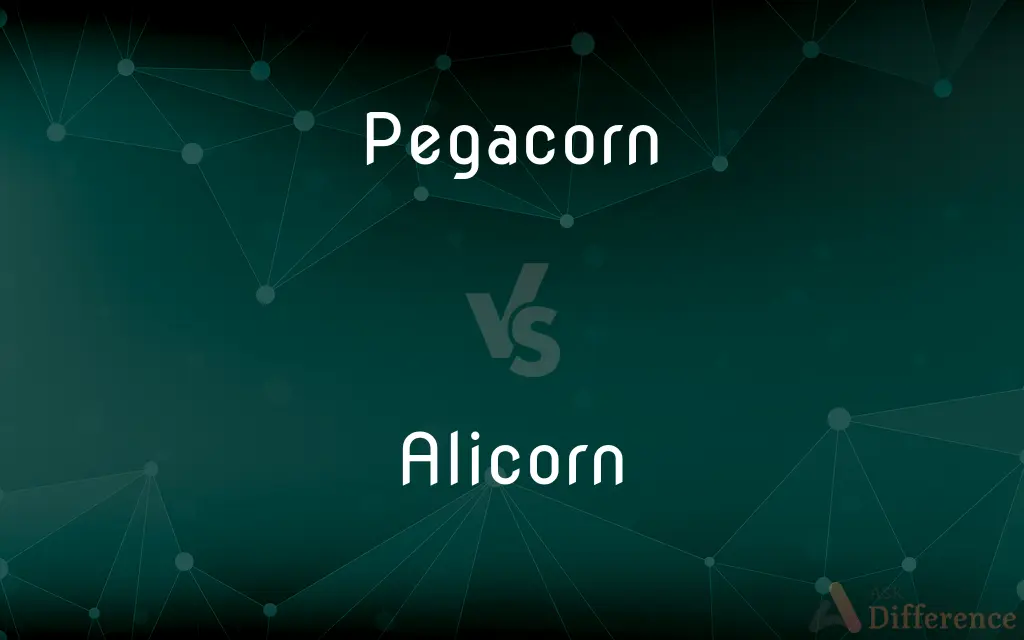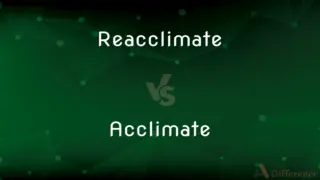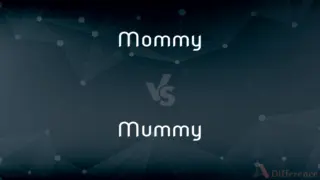Pegacorn vs. Alicorn — What's the Difference?
Edited by Tayyaba Rehman — By Maham Liaqat — Updated on March 20, 2024
A pegacorn combines the features of a pegasus and a unicorn, known for wings and a horn, while an alicorn is often a term used for the horn of a unicorn or, in modern fantasy, a creature with both features.

Difference Between Pegacorn and Alicorn
Table of Contents
ADVERTISEMENT
Key Differences
Pegacorns and alicorns both occupy a special place in the realm of mythical creatures, captivating the imagination with their majestic and fantastical elements. Pegacorns are depicted as magical horses with both wings and a single horn, embodying the essence of freedom and purity found in the myths of pegasi and unicorns. They symbolize the ultimate combination of the ability to fly and magical powers, often associated with healing and protection. On the other hand, the term alicorn has undergone a transformation in its use and meaning over time. Traditionally, alicorn referred to the horn of a unicorn, believed to have magical healing properties. However, in contemporary fantasy literature and media, an alicorn is increasingly used to describe a creature that possesses both the wings of a pegasus and the horn of a unicorn, similar to a pegacorn.
The distinction between pegacorns and alicorns can sometimes blur, especially in modern interpretations where both terms are used interchangeably to refer to the winged and horned horse. However, the origins of the terms and their traditional meanings highlight a difference in focus. Pegacorns, by definition, emphasize the amalgamation of the physical traits and powers of pegasi and unicorns, often represented in stories and art as symbols of ultimate magic and virtue. Whereas, the historical concept of an alicorn as a unicorn's horn places more emphasis on the object's supposed magical properties rather than the creature itself. This reflects a shift from the object of power (the alicorn) to the embodiment of power in a single mythical creature (pegacorn or alicorn as a winged, horned horse).
In fantasy fiction and popular culture, the portrayal of pegacorns and alicorns varies, reflecting the creative interpretations of authors and artists. Pegacorns are often characterized by their majestic beauty, the ability to fly, and their magical horn, which together symbolize purity, grace, and strength. They are frequently depicted as rare and powerful creatures, guardians of mystical realms or beings of pure light and magic. Alicorns, particularly in modern fantasy, share these attributes but may also carry a richer symbolic meaning due to the dual nature of their heritage - the serenity and healing powers of unicorns combined with the freedom and majesty of pegasi.
Understanding the nuances between pegacorns and alicorns enhances the appreciation of these mythical creatures in various cultural contexts. While both are celebrated for their beauty and mystical powers, recognizing the subtle differences and origins of each term enriches the mythology surrounding them. The evolution of the term alicorn to encompass both the magical properties of the unicorn's horn and the hybrid winged and horned horse reflects a broader trend in fantasy literature and media to blend and reimagine mythical creatures in new and fascinating ways.
Comparison Chart
Definition
A mythical creature with both wings and a unicorn's horn.
Traditionally, the horn of a unicorn; now, also a creature with wings and a horn.
ADVERTISEMENT
Origin of Concept
Combines features of a pegasus (winged horse) and a unicorn.
Originally referred to the material of a unicorn's horn, with modern usage including the winged unicorn concept.
Symbolism
Symbolizes purity, freedom, and the power of flight and magic.
Represents healing, magic, and the combination of serenity and majesty.
Cultural Significance
Emphasizes the magical attributes and virtues of combining two mythical creatures.
Reflects the evolving nature of mythical creatures in literature and media, emphasizing magical powers.
Portrayal in Media
Often depicted as guardian creatures or beings of light in stories and artwork.
Varies widely, with some interpretations focusing on the creature's healing and protective powers.
Compare with Definitions
Pegacorn
A guardian of mystical realms in folklore.
The pegacorn guarded the entrance to the enchanted forest, allowing only the pure of heart to enter.
Alicorn
Represents a blend of healing, magic, and the majesty of flight.
The alicorn's presence brought peace and healing to the troubled village.
Pegacorn
A creature of beauty and grace in mythology.
Tales of the pegacorn spoke of its breathtaking beauty and graceful flight.
Alicorn
Traditionally, the material or horn of a unicorn, believed to have magical properties.
The king's scepter was adorned with a piece of alicorn, said to protect the realm from evil.
Pegacorn
A symbol of ultimate magical power and purity.
In the ancient text, the pegacorn was described as the most powerful creature of the land.
Alicorn
In modern fantasy, a creature with the body of a horse, wings of a pegasus, and a unicorn's horn.
The alicorn descended from the heavens, bringing light to the darkened world.
Pegacorn
A mythical creature with the body of a horse, wings of a pegasus, and a unicorn's horn.
The pegacorn soared above the clouds, its horn shimmering in the sunlight.
Alicorn
A creature of significant power and beauty in contemporary mythology.
Artists often depict the alicorn with radiant wings and a glowing horn, highlighting its majestic and powerful nature.
Pegacorn
Represents the fusion of two iconic mythical creatures.
The pegacorn, with its wings and horn, represents a perfect blend of the magical attributes of pegasi and unicorns.
Alicorn
A symbol of purity, magical power, and the unity of mythical elements.
The alicorn, combining the qualities of both pegasi and unicorns, symbolized the ultimate magical being.
Pegacorn
(informal) A horned Pegasus or a winged unicorn.
Alicorn
The horn of a unicorn considered as a medical or pharmacological ingredient.
Alicorn
(nonstandard) A mythological creature, a mixture of pegasus and unicorn: a winged horse with a single horn on its head.
Common Curiosities
How are pegacorns and alicorns depicted in modern fantasy?
In modern fantasy, both pegacorns and alicorns are often depicted as creatures with the body of a horse, wings of a pegasus, and a unicorn's horn, symbolizing a blend of majesty, magic, and healing.
What symbolizes a pegacorn?
A pegacorn symbolizes the ultimate magical creature, embodying purity, the power of flight, and magical abilities.
What does alicorn mean traditionally?
Traditionally, an alicorn refers to the material of a unicorn's horn, believed to possess magical healing properties.
Are pegacorns and alicorns the same?
While they share similar characteristics in contemporary fantasy, traditionally, alicorn referred to the unicorn's horn, and pegacorn is a more specific term for the creature combining features of both a pegasus and a unicorn.
What is a pegacorn?
A pegacorn is a mythical creature with the body of a horse, the wings of a pegasus, and the horn of a unicorn, symbolizing magical power and purity.
Are there any cultural differences in how pegacorns and alicorns are viewed?
Yes, cultural differences can affect how these creatures are viewed, with some cultures emphasizing their magical and healing properties, while others may focus on their symbolism of purity and strength.
Can alicorns and pegacorns be considered unique creatures?
Yes, despite their similarities, alicorns and pegacorns can be considered unique based on their origins and how they are portrayed in different myths and stories.
What role do pegacorns play in mythology?
Pegacorns often play roles as guardians of mystical places, symbols of ultimate purity and magical power, and protagonists in tales of adventure and wonder.
How did the modern interpretation of an alicorn come to include both wings and a horn?
The modern interpretation evolved as fantasy literature and media began blending various mythical creatures into new forms, with the alicorn emerging as a popular hybrid of pegasi and unicorns.
How are pegacorns and alicorns typically used in stories and media today?
They are often used as central figures in fantasy stories and media, representing ideals of good, the magical, and the overcoming of great challenges with their unique abilities.
Share Your Discovery

Previous Comparison
Reacclimate vs. Acclimate
Next Comparison
Mommy vs. MummyAuthor Spotlight
Written by
Maham LiaqatEdited by
Tayyaba RehmanTayyaba Rehman is a distinguished writer, currently serving as a primary contributor to askdifference.com. As a researcher in semantics and etymology, Tayyaba's passion for the complexity of languages and their distinctions has found a perfect home on the platform. Tayyaba delves into the intricacies of language, distinguishing between commonly confused words and phrases, thereby providing clarity for readers worldwide.














































